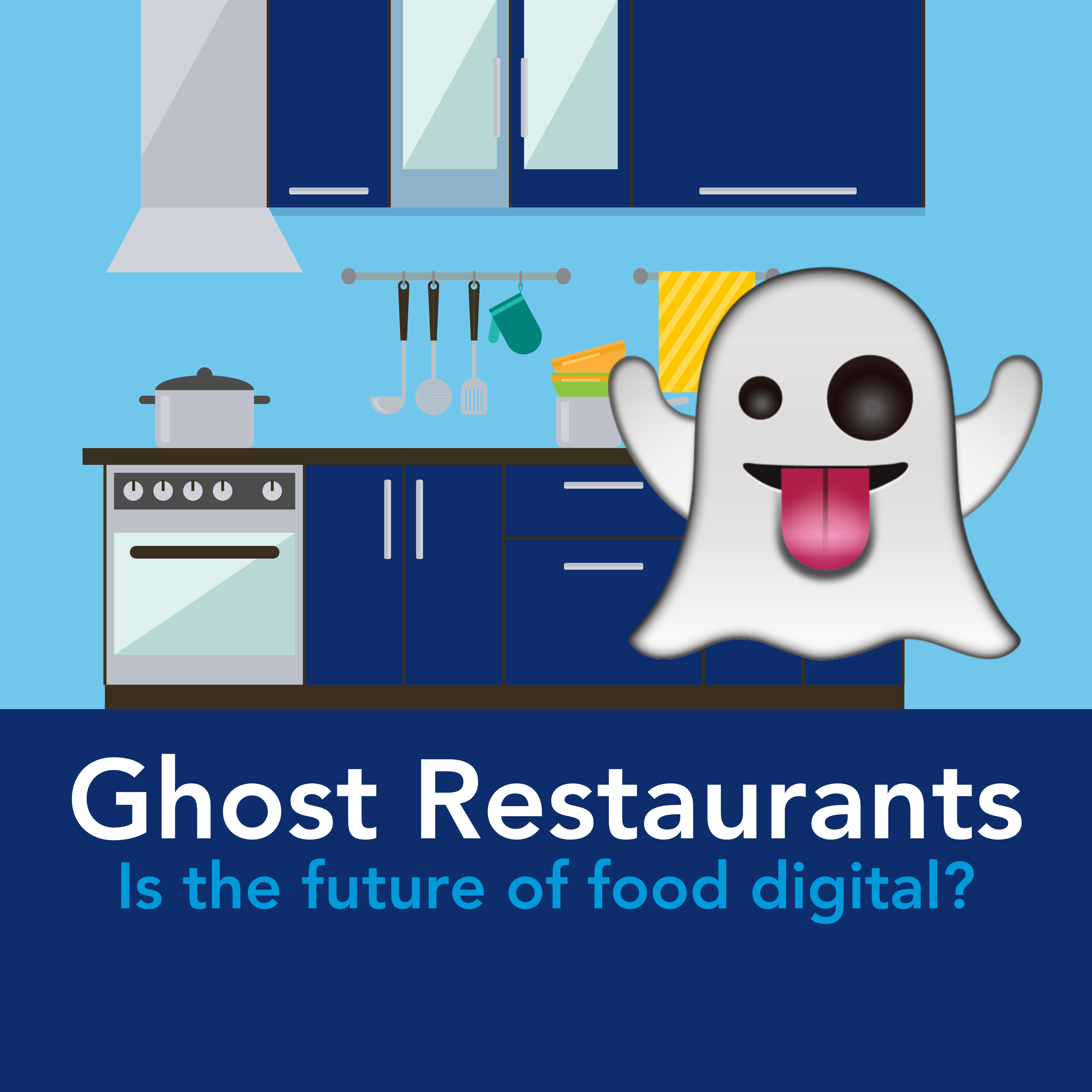What on earth is this I hear you say? Well, it’s a kitchen that exists to only take orders through online applications or through smartphone apps like Uber Eats or Deliveroo. These restaurants are also known as ‘Virtual Kitchens’, ‘Dark Kitchens’ and even ‘Ghost Kitchens’.
Restaurants have developed this concept alongside the explosion of the third-party delivery app market. They focus primarily on the production and optimisation of food preparation. Removing the added additional costs of larger premises and employing waiting staff. Visibility, curb appeal, foot traffic, and accessibility are of no concern as the kitchen can be housed in an inexpensive location that would not typically be considered desirable for a restaurant. A typical ghost restaurant location can also accommodate the preparation of several different types of cuisines. You can even have multiple brands operating out of one site meaning the income stream can be increased without the need for renting more space. Meaning there is a likelihood of appealing to customers changing appetites.
So why the investment? Well, it’s all down to cost reduction and one of the biggest costs is labour within the conventional setup. Most restaurants still rely on leasing the most expensive real estate in the best locations to attract customers and drive sales. With increasing wages, growing labour compliance regulations and largely seasonal shifts in business, this puts a strain on the profits of the company.
Recently we have seen technology sidestep into the fold allowing restaurants to revolutionise the experience and help drive more profit through takeaway services. We have also seen shifting attitudes in food consumption and the introduction of ‘robot-couriers’. This has fielded a lot of well know brands to start offering delivery service, something they may not have considered previously, as part of their amenities. We now see brands like Gourmet Burger Kitchen, Wagamama and Five Guys devoting some of their kitchen time to delivery, installing Kitchen Management Technology to facilitate the increasing demand.
Dominos is a fantastic example of a virtual kitchen concept. They have really embraced technology to provide exceptional service with its delivery options. Introducing food delivery apps, improved kitchen management systems, GPS tracker technology, SMS ordering and even beginning to adopt Drone Delivery. (check their tech here)
As well as existing brands dipping their toe in the virtual kitchen trend, we have seen some companies specialise in opening ‘Ghost Brands’. These ‘brands’, like Buns and Bao, Brooklyn Burger Factory and MIA Wings are only offered through the JustEat platform making them solely virtual. However, other companies have taken it one step further and process multiple brands through one kitchen.
Keatz is a great example of one of these companies in mainland Europe. Their philosophy is to provide food to your door with the same delicious taste that leaves their kitchen. Their approach is to be innovative with creative menus, delivering it all with cutting edge equipment in well-contemplated sustainable packaging. Some of their brands include Tamaka Bowls and Bites, Ono Ono Poké, Gringo and Moody Monkey Thai Curries across mainland Europe
What’s great about these Brands is that the whole concept has been put together based on behaviour, demands, and demographics in an area. Through using marketing analytics provided by courier apps, companies can alter or provide brands to reflect demand. With very little marketing input and changes to tech infrastructure. This means they can be experimental, fluid and more responsive without investing in heavy physical store rebrands.
Without technology and Innovation, fast-changing food sourcing channels would not exist. Just like the shift toward online retail, we are now seeing the food industry following the same path.
 En
En
 De
De 

